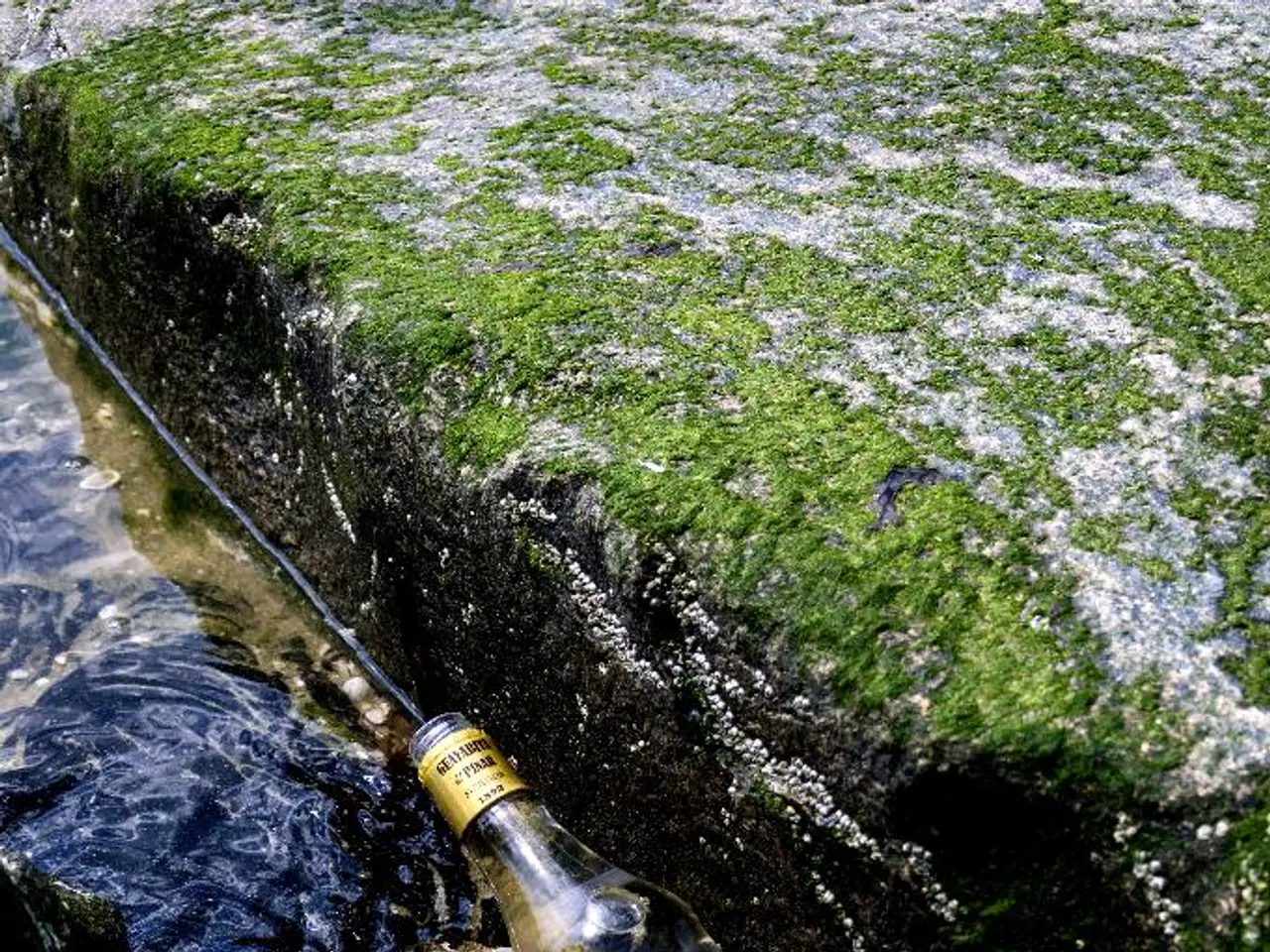University of Osnabrück researchers disclose an uncharted microscopic process in calcite, a mineral
The University of Osnabrück has made a significant breakthrough in understanding the interaction between water molecules and calcite, a common mineral on Earth. A team led by Dr. Philipp Rahe and his research group has published a paper in the Journal ACS Nano, titled "Sidestepping intermolecular hydrogen bonds: How single water molecules adsorb and assemble on the calcite(104)-(2×1) surface."
The study, which was supported by the German Research Foundation and the University of Osnabrück, provides insights into the arrangement and orientation of individual water molecules on the calcite surface. Using advanced experiments on individual water molecules and ab-initio simulations, the researchers elucidated the mechanism by which water molecules bind to calcite at two distinct positions, causing surface atoms to shift back from the reconstructed form to the original crystal structure.
This dynamic interaction means that water molecules can pull on calcite surface atoms, effectively altering the surface structure locally. The two different adsorption positions for water, despite having identical local geometry, differ in binding energy and effects on the surface structure due to this atom rearrangement.
The way water molecules bind and reorganize calcite’s surface atoms influences how calcite interacts with gases like CO2, as the surface structure and chemistry determine adsorption properties. This knowledge can improve models of CO2 binding on mineral surfaces, which is important for carbon capture and storage technologies aimed at reducing atmospheric greenhouse gases.
Additionally, such surface interactions underlie calcite’s behavior in environmental and industrial processes, including adsorbing pollutants or heavy metals from water, relevant for wastewater treatment. The strong interaction between polar water molecules and calcite surfaces also affects oil recovery in porous calcite reservoirs by influencing fluid displacement dynamics.
Therefore, the atomic-level interaction of individual water molecules with the calcite surface not only reveals fundamental surface chemistry but also has broad societal impacts on climate mitigation strategies, environmental remediation, and resource extraction by informing how calcite surfaces behave in wet environments interacting with CO2 and pollutants.
For further information, Dr. Philipp Rahe can be contacted at [email protected], and Vivienne Vent at [email protected] can be contacted for media inquiries. The authors of the paper are J. Heggemann, J. Huang, S. Aeschlimann, S. Spiller, A.S. Foster, and P. Rahe.
Calcite, with its capability to bind the greenhouse gas carbon dioxide in rocks and oceans, plays a central role in natural and technical processes. This new research provides valuable insights into the complex interactions between water and calcite, paving the way for future advancements in climate protection, environmental protection, and the development of new materials.
References:
[1] Heggemann, J., Huang, J., Aeschlimann, S., Spiller, S., Foster, A. S., & Rahe, P. (2020). Sidestepping intermolecular hydrogen bonds: How single water molecules adsorb and assemble on the calcite(104)-(2×1) surface. ACS Nano, 14(5), 6425-6436. DOI: 10.1021/acsnano.5c05845.
[2] Rahe, P., & Spiller, S. (2018). Calcite surface chemistry in geological and biomineralization processes. Chemical Reviews, 118(15), 8451-8491. DOI: 10.1021/acs.chemrev.8b00228.
[3] Foster, A. S., & Rahe, P. (2017). Interfacial water dynamics in porous media. Annual Review of Earth and Planetary Sciences, 45, 421-447. DOI: 10.1146/annurev-earth-052616-013353.
The study, published in the Journal ACS Nano, reveals that advancements in environmental-science and technology, such as ab-initio simulations and experiments on individual water molecules, have aided researchers in understanding the interaction between water molecules and calcite, which has broad societal impacts on climate-change mitigation strategies, environmental remediation, and resource extraction. The insights gathered from this research could potentially improve models of CO2 binding on mineral surfaces, contributing to carbon capture and storage technologies, as well as enhancing our understanding of calcite's behavior in environmental and industrial processes.
By shedding light on the atomic-level interaction of individual water molecules with the calcite surface, this new research paves the way for future advancements in climate protection, environmental protection, and the development of new materials, given calcite's capability to bind the greenhouse gas carbon dioxide in rocks and oceans.




